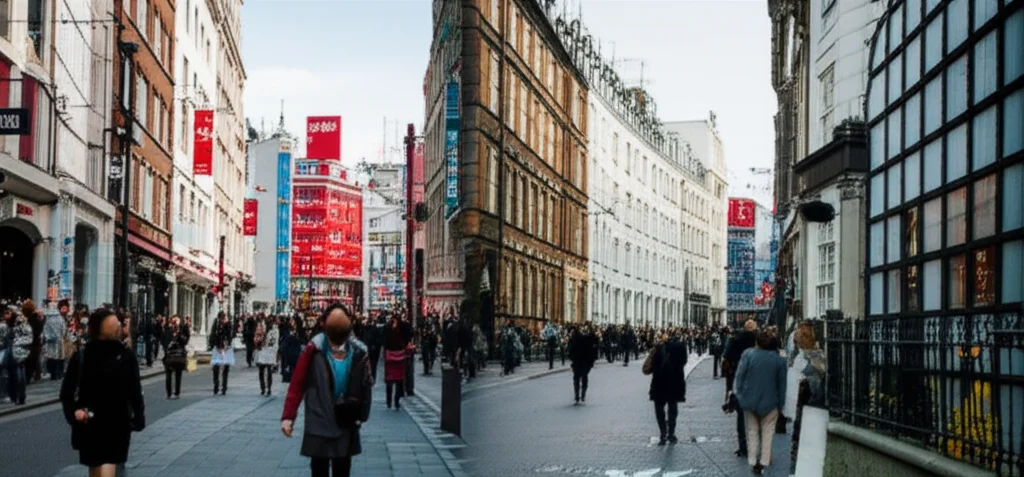Beyond the Mismatch: Culture, Communication, and Autism Understanding
Okay, so let’s dive into something pretty fascinating that challenges how we often think about communication, especially when it comes to autistic and non-autistic folks interacting. For ages, the go-to explanation for why autistic people might find social situations tricky was this idea of a “deficit” – like they were missing some key ingredient for understanding others’ minds, often called Theory of Mind (ToM).
Now, don’t get me wrong, acknowledging challenges is important, but this “deficit” view has some real downsides. It puts all the pressure on the autistic person to change, to “conform” to what’s considered “normal” social behavior. This can lead to masking or camouflaging, which, frankly, can be exhausting and linked to some tough mental health stuff like anxiety and depression. Plus, the science behind this deficit idea? Turns out it might not be as clear-cut or consistently replicated as we once thought.
Shifting the View: It Takes Two to Tango (or Misunderstand)
Lately, there’s been a really important shift in thinking. What if the difficulty isn’t a one-way street? What if it’s more about a *mismatch* or a difference in communication styles between neurotypes? This is where ideas like the “double empathy problem” come in. It suggests that when autistic and non-autistic people interact, *both* sides might struggle to fully understand the other’s perspective. It’s not just one group having a problem; it’s about the interaction *itself* hitting a snag because of different ways of processing the world.
This perspective aligns with the social model of disability, which argues that challenges faced by disabled people often arise from the way society is set up, rather than solely from an individual’s impairment. Applied to autism, it means social difficulties might be less about an inherent lack of skill and more about navigating a social world built primarily by and for non-autistic people. This shift is huge because it takes the pressure off the individual and highlights the relational nature of communication.
Testing the Waters: Triangles, Movement, and Mental States
So, how do you actually test this “mismatch” idea empirically? It’s tricky! One tool researchers have used for a while is the “animations task.” Picture this: you watch short videos of two simple geometric shapes, usually triangles, moving around. Your job is to interpret what’s happening – are they just bumping into each other (a non-mental state action), or are they, say, “surprising” or “teasing” each other (actions implying mental states)?
Traditionally, autistic participants have been found to be less likely to interpret these animations using mental state terms in the same way non-autistic participants do. This was often seen as evidence for the ToM deficit. But a clever study by Edey and colleagues flipped the script. They had both autistic and non-autistic adults *create* these animations first, and *then* interpret animations made by both groups. What they found was pretty cool: non-autistic participants struggled to interpret animations made by autistic folks, just as autistic participants struggled with non-autistic-made ones. Bi-directional difficulties!
This led to the idea that maybe differences in *movement* style – the way the triangles were moved – played a role. Our own movements and how we understand them might influence how we interpret others’ movements. If autistic and non-autistic people move differently (and research suggests they often do, sometimes with more “jerkiness” or variability), this kinematic difference could be a source of the mismatch in understanding.

Adding a New Layer: Culture Matters!
Now, here’s where the study we’re looking at comes in and adds a crucial layer: culture. Most of the research on autism and social cognition has been done in Western countries. But what’s considered “successful” social interaction, or even what constitutes “atypical” behavior, can vary *a lot* across cultures. Think about eye contact – highly valued in many Western cultures, but sometimes seen as less important or even uncomfortable in others, like Japan.
So, this study asked: Is the finding of bi-directional mentalising difficulties between autistic and non-autistic adults (like the Edey study found) stable and repeatable in a Western context (the UK sample)? And, crucially, is it transferable to a non-Western culture (the Japanese sample)? They used a similar animations task where participants first created animations and then interpreted those made by others within their own culture and neurotype group. They also looked at movement kinematics (specifically, “jerk difference”) as a potential factor in understanding.
What Happened in the UK? Replication Time!
First off, in the UK sample, the results largely replicated the previous study.
- Non-autistic adults *did* perform worse when interpreting animations created by autistic adults compared to those made by other non-autistic adults. This supports the idea that the difficulty isn’t just on the autistic side.
- Interestingly, autistic adults in the UK *didn’t* show an “own-group” advantage. They performed similarly whether the animations were made by autistic or non-autistic people.
- When they looked at movement similarity (lower jerk difference), they found that participants (both autistic and non-autistic) were better at interpreting animations when the movement style was more similar to their own. This effect was particularly noticeable for animations made by the autistic group.
- They also found that UK autistic participants showed higher *variability* in their movement jerk compared to UK non-autistic participants, even if the average jerk wasn’t different. This variability might make their animations harder for *anyone* to interpret consistently.
So, in the UK, the mismatch idea got some more support, and movement style seems to play a role, especially in understanding autistic-generated movements.
Across the Pond: Japan’s Different Story
Now, for the really interesting part – Japan. The picture looked quite different here.
- Contrary to the hypothesis, there was *no* significant difference in mentalising performance between Japanese autistic and non-autistic adults. Both groups interpreted animations generated by either neurotype equally well.
- And that movement similarity effect we saw in the UK? It didn’t show up in the Japanese sample. Kinematic overlap didn’t seem to influence how well they interpreted the animations.
- Intriguingly, Japanese participants (both autistic and non-autistic) actually performed *better* overall on the task compared to the UK participants.
This is a big deal! It suggests that findings about social cognition and autism from one culture might not simply transfer to another.

Connecting the Dots: Why the Difference?
So, what’s going on here? Why did the UK results support the bi-directional mismatch idea, but the Japanese results didn’t? The researchers chew over a few possibilities:
1. Camouflaging: Maybe Japanese autistic adults, living in a culture that might place a high value on conformity, are more adept at (perhaps unconsciously) mimicking non-autistic movement styles when creating animations? While some research suggests less *self-reported* camouflaging in Japan, it could be that cultural norms around blending in are so strong that it’s less a conscious strategy and more deeply ingrained.
2. Higher Baseline Autistic Traits: Some studies suggest the general Japanese population might have higher average scores on measures of autistic traits compared to Western cultures. If there’s more overlap in communication styles or preferences between the general population and the autistic population in Japan, the “mismatch” might simply be smaller to begin with. Shared preferences for structure or intolerance for uncertainty, common in both Japanese culture and autism, could play a role.
3. Cultural Task Suitability: This is a really compelling idea. The animations task requires you to anthropomorphise – to see human-like intentions in moving shapes. Turns out, anthropomorphism of non-living things is pretty common in Japanese culture (think of all those adorable mascots, yuru-kyara!). This might stem from Shintoism, which sees life in everything. If Japanese people, especially perhaps autistic individuals with strong interests in things like anime (which features expressive movement), have a cultural predisposition or practice effect in anthropomorphising, this specific task might tap into a strength they have, regardless of their general social interaction skills in real life. This could explain why they performed better overall and why the typical “autistic vs. non-autistic” difference seen in Western samples didn’t appear.
4. Movement Cues Differ: The lack of a movement similarity effect in Japan could mean that Japanese individuals rely on different kinds of movement cues, or perhaps less on overt body movement, to infer mental states compared to Westerners. Cultural display rules around expressing emotion through movement could be at play.
Limitations and Looking Ahead
Of course, like any study, this one has limitations. Matching participants perfectly across cultures and neurotypes is tough (they had some differences in IQ and age, though analyses suggested this didn’t explain the main findings). Also, the animations task, while useful, might not capture the full complexity of real-life social interaction or all aspects of mentalising. It might be more sensitive to things like processing motion or integrating information than pure “mind-reading.”

Despite the limitations, this research is super important. It adds weight to the idea that communication difficulties aren’t just about an individual deficit but are relational. It also shouts loudly about the need for more cross-cultural research in autism. Our current understanding and even diagnostic tools (which were developed in Western contexts) might not be universally applicable. Items assessing things like eye contact or gesture frequency, for instance, might mean different things in different cultures.
This study encourages us to move towards a “socio-cultural model of disability,” recognizing that autism is understood and experienced differently depending on the cultural context. It pushes us to develop more culturally sensitive ways of assessing and supporting autistic people worldwide. It’s a call to action to look beyond Western norms and appreciate the diverse ways human minds connect (or sometimes, charmingly, misconnect!).
Source: Springer







